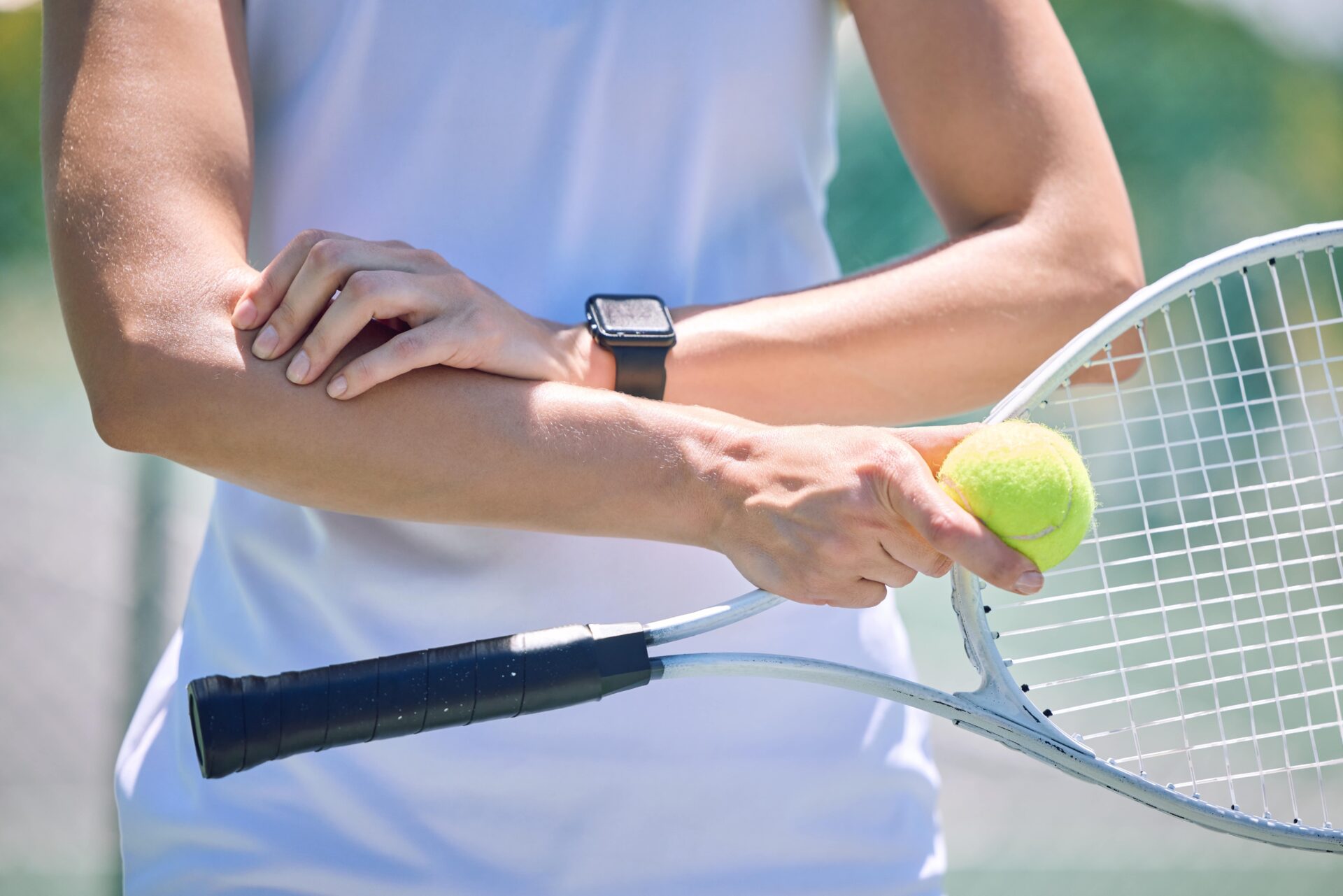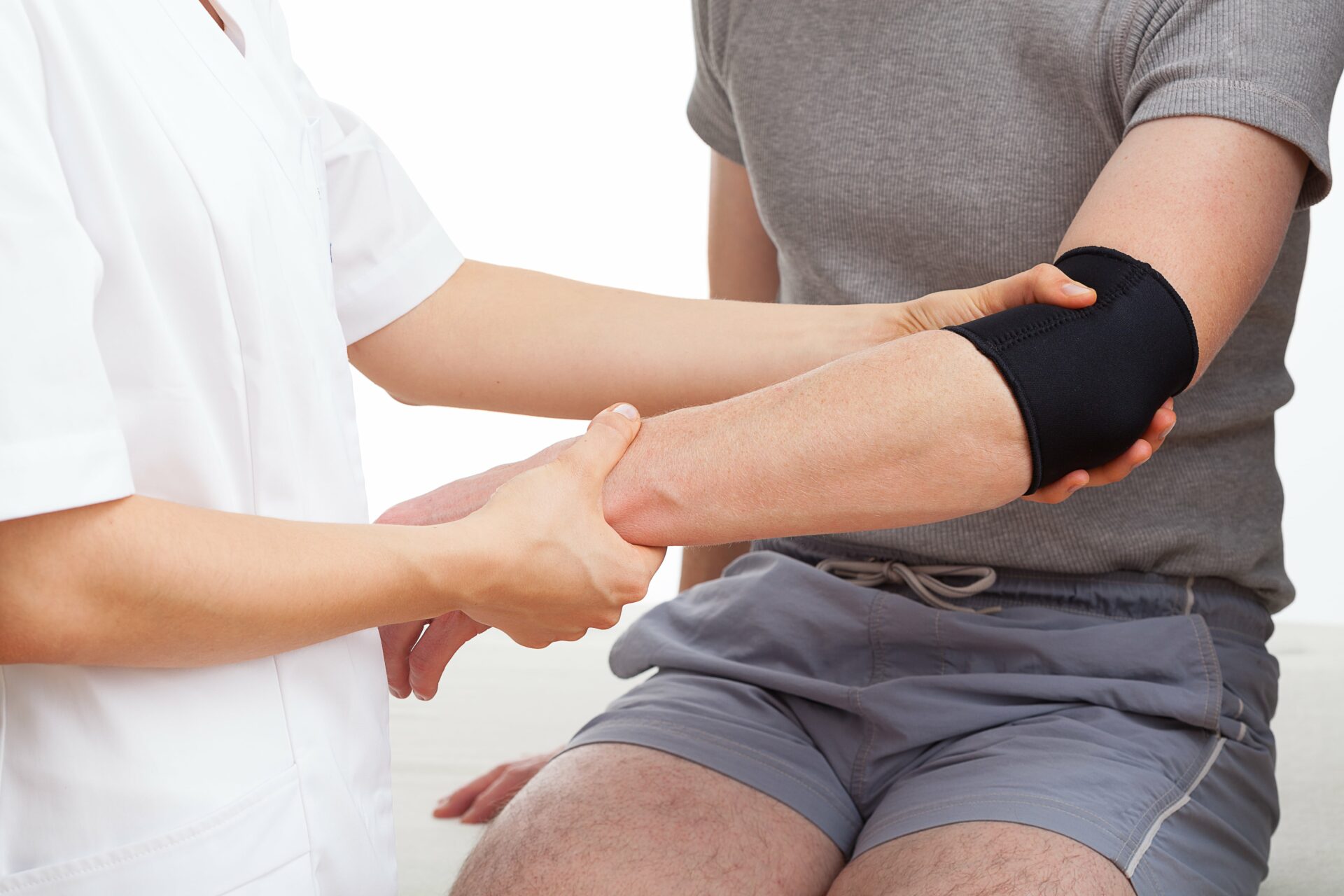Tennis is an extremely physically demanding sport where injuries can be prevalent across the body. More recently, tennis wrist injuries have become more common, affecting both amateurs and professionals alike, notably Rafael Nadal and Juan Martín Del Potro.
In this article, we’ll discuss the various wrist injuries, their causes, treatment methods, and how you can avoid them.
Common Wrist Injuries
The wrist is formed by eight bones called carpals, connected to the forearm bones, the radius and ulna, into the long bones in your hand, the metacarpals. These bones are attached via ligaments, attach to muscles via tendons and allow for the passage of nerves to the fingers.
As far as injuries to the wrist in tennis players, they are classified into either radial-sided or ulnar-sided injuries; radial-sided refers to your thumb side, and ulnar-sided meaning along your little finger. Furthermore, the side of injury is significantly impacted by your grip type on the racket; characterised by Eastern, Western, or Semi-westen grips – more on this will be explained below.
Here are some examples of common injuries to the wrist for tennis players:
Scaphoid Fracture
The scaphoid is one of the carpal bones in your wrist. This bone is susceptible to breakage due to repetitive weight bearing during tennis, or when fallen on with an outstretched hand. You can expect to experience lots of pain and swelling with this injury and be out of action for 8-12 weeks with a cast.
Dorsal Carpal Ganglion Cysts
Ganglion cysts are a harmless swelling of fluid around the wrist joint. They occur due to overuse, however, they don’t tend to cause too much pain, if anything you might experience slight discomfort and less movement available at the wrist. Depending on the size, treatment can range from simply waiting for the cyst to pass, draining the fluid, or a splint.
Extensor Carpi Ulnaris Tendonitis
The extensor carpi ulnaris (ECU) tendon allows the wrist and forearm to rotate, which, for tennis players, means it is susceptible to overuse. Excessive use leads to inflammation, swelling, and pain, which will inhibit your ability to play. The best treatment methods involve ice, rest, and some non-steroidal anti-inflammatory drugs (NSAIDs) such as ibuprofen. Injury to the ECU makes up 75% of wrist pain and if not allowed to repair, can lead to a very painful tendinopathy.
Triangular Fibrocartilage Complex Tenderness
The triangular fibrocartilage complex (TFCC) is a small structure that helps stabilise the small carpal bones and the ulna, aiding grip and forearm rotation. This is another injury mainly caused by overuse in tennis players but can also be affected by your grip type. TFCC tears treatment can range from NSAIDs to surgery, depending on the severity.
Causes of Injury
Overuse
As pointed out in all of the common injuries above, overuse is the biggest factor in the cause of injury for tennis players. Repetitive movement of your wrist for prolonged periods without sufficient rest and recovery causes your muscles and tendons to tire. Due to the repetitive nature of tennis, coupled with high force and sudden movements, injuries at the wrist are becoming more common.
String Types
Overuse isn’t the only cause of injury in tennis, however. External factors such as your tennis strings increase your odds of injury – who would’ve thought? Research has found that polyester tennis strings are much stiffer, so when hit with force by the tennis ball, vibrations are sent through the wrist. This can tire out the structures in your wrist and lead to overuse injuries. Nylon strings are actually a much better alternative as they are softer – reducing the level of vibration experienced.
Grip Styles
Going back to the aforementioned grip types, the style in which you hold your racket can impact on what injuries you are exposed to. Western/Semi-western grips are associated with ‘ulnar-sider’ injuries such as ECU tendonitis, whereas Eastern grips are linked to ‘radial-sided’ injuries such as DeQuervains disease. Your level and style of play should pair with your grip style, with non-professionals encouraged to adopt the Eastern style due to its lower injury rate and suitability to a less intense game of tennis.
Treatment Methods
RICE
Don’t worry, it’s not the sort of rice you eat – RICE actually stands for Rest, Ice, Compression and Elevation. This is a common treatment method for injuries involving inflammation and swelling, so will suit ECU tendonitis and TFCC tenderness injuries.
Operative vs Non-Operative
To operate or not to operate, that is the question. And it can be answered depending on these factors:
- Has the bone become displaced?
- Where exactly has the fracture occurred?
A fracture around the thumb can generally be allowed to heal itself with the addition of a cast or splint. If the bone isn’t displaced, healing time can range from 8-12 weeks without wrist surgery. However, if the fracture is closer to the radius and/or displaced, intervention is needed via surgery, placing a small screw/pin into the bone with a small incision. Full recovery can take up to 4 months when surgery is involved.
Your doctor may also suggest a prescription of NSAIDs to aid with the pain, swelling and inflammation for most injuries.
Postoperative Management
Recovering from an injury can be long and difficult, but ensuring you take the correct measures can be the difference in a quick return to play, or a recurring injury for life. Physiotherapy involving hand exercises to help improve range of movement, blood flow and strength are the most advised techniques for wrist injuries. Some basic exercises you may be prescribed could involve wrist movements using a lightweight device or a plated ball balance exercise – this involves holding a plate on your injured-side’s finger tips, placing a ball on top, and attempting to keep it as balanced as possible. This is a good exercise for improving dexterity whilst strengthening the muscles in the wrist and forearm.
Prevention Techniques
Warm Up
The most basic but often most overlooked prevention method is a warm up before starting physical activity. For tennis players, hand and wrist exercises should be completed to allow the muscles to stretch and lengthen, making them less likely to tear or injure. A variety of stretches should be implemented, covering all directions of movement, repeating each exercise for 15 repetitions and for 3 sets.
Adjust Technique
As mentioned earlier, grip styles can affect injury rates in different players. If you find you are experiencing the same symptoms each time you play tennis, consider adjusting your grip style to see if symptoms relieve. This can be difficult to get used to, however the impacts may be more beneficial in keeping you on the court instead of sidelined with a recurring injury.
Strength Training
Stronger muscles, tendons, ligaments and bones can make a huge difference in not only preventing injuries, but recovering from them too. Professional tennis players won’t just practice serves and returns, but instead will spend hours in the gym, ensuring every aspect of their body is at the optimal level for competing. This involves lots of strength training, especially in their wrists and forearms in order to deal with immensely fast serves from their opponent, without running the risk of injury. For the racket to stay stable upon a return shot, your wrist must be strong enough to bare the load without failing. Wrist and forearm targeting exercises might include wrist curls and forearm pronation and supination exercises.
Extra Measures
Some smaller prevention measures can be implemented to decrease your odds of injury such as:
- Using wrist guards – helps stabilise and absorb shock at the wrist
- Changing your tennis strings – nylon strings absorb more shock than polyester
- Don’t forget about your non-dominant hand – keeping both wrists and forearms strong will be more beneficial in preventing injury
- Make sure you rest! – taking regular breaks is vital in aiding recovery and preventing overuse injuries occurring, especially if you have already sustained an injury, allow time for full recovery before returning to play.
To conclude, as a tennis player, it is vital that the correct measures are taken to reduce the likelihood of injury, including proper rest and recovery to prevent overuse injuries. Due to the nature of tennis, it is easy to neglect preventative measures, but hopefully this article has fully informed you of the implications of common wrist injuries in the world of tennis. If you have any more questions about wrist injuries, get in touch with us today!



